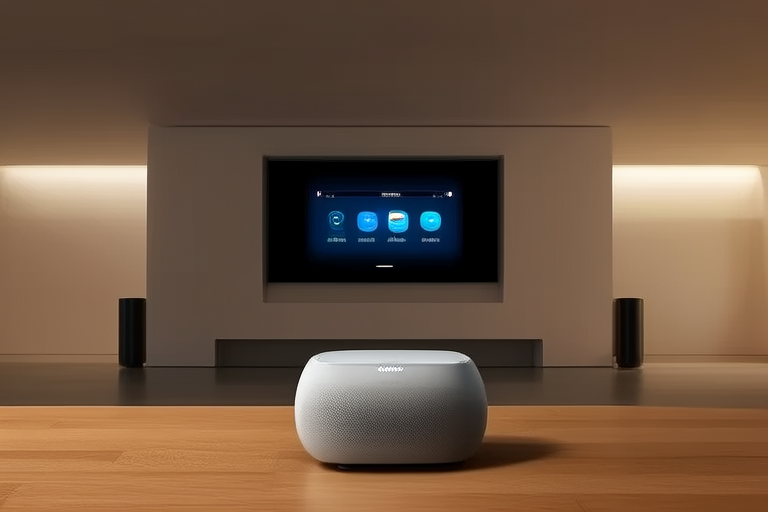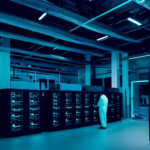“`html
Building a Future-Ready Home with Cutting-Edge Smart Tech
Introduction
The concept of a future-ready home is no longer confined to science fiction. Today, integrating cutting-edge smart technology into home design and living spaces is becoming increasingly essential. These technologies not only enhance convenience but also significantly improve energy efficiency, security, and overall quality of life. As we move towards a more technologically advanced world, it is crucial to embrace innovations that will shape our homes into functional, intelligent, and sustainable living environments.
Smart Home Automation Systems
At the heart of a future-ready home lies the smart home automation system. This system allows homeowners to control various aspects of their living space remotely, making daily tasks easier and more efficient. Key components include smart thermostats, lighting systems, and appliance controls. For instance, smart thermostats adjust temperatures based on occupancy patterns, ensuring optimal comfort while minimizing energy waste. Similarly, lighting systems can be programmed to mimic natural light cycles, enhancing both mood and productivity.
These individual components work together seamlessly through a central hub or app, creating an integrated ecosystem that responds intelligently to user preferences and environmental conditions. Popular brands such as Nest, Philips Hue, and Samsung SmartThings offer a range of products designed to fit various budgets and needs. By automating routine tasks, these systems free up time and reduce stress, contributing to a more enjoyable and productive lifestyle.
Energy Efficiency and Sustainability
One of the most significant benefits of smart technology in homes is its ability to promote energy efficiency and sustainability. Innovations like solar panels integrated with smart grids allow homeowners to harness renewable energy sources efficiently. Advanced insulation materials further minimize heat loss, reducing reliance on traditional heating methods. Additionally, smart windows equipped with adaptive glazing can automatically adjust transparency levels according to external light intensity, thereby regulating indoor temperatures naturally.
By adopting these technologies, households can achieve substantial cost savings over time while minimizing their carbon footprint. The environmental impact of reduced energy consumption cannot be overstated, especially given the pressing need for global sustainability efforts. Investing in green technologies not only supports ecological preservation but also enhances property value and appeal.
Enhanced Security Features
Security remains a top priority for many homeowners, and smart technology offers robust solutions to address these concerns. Modern smart security systems incorporate features such as high-definition cameras, video doorbells, motion detectors, and sophisticated alarm systems. These devices often come with mobile apps enabling real-time monitoring and remote access, providing peace of mind even when away from home.
Interconnectedness among different security components forms the backbone of an effective smart home setup. For example, motion sensors can trigger lights or alarms upon detecting unusual activity, while doorbells equipped with facial recognition capabilities notify users instantly if unauthorized individuals approach. Despite these advancements, privacy and data security remain critical considerations. It is vital to choose reputable manufacturers who prioritize encryption protocols and regular software updates to safeguard personal information against cyber threats.
Health and Wellness Integration
A future-ready home extends beyond mere functionality; it promotes well-being through thoughtful integration of health-focused technologies. Air quality monitors detect pollutants and allergens, ensuring cleaner breathing environments. Fitness trackers integrated into home networks provide personalized workout recommendations tailored to individual goals. Moreover, smart mirrors displaying daily health metrics serve as motivational tools encouraging healthier lifestyles.
Creating a healthy living environment requires attention to detail across multiple domains. From ergonomic furniture designs to noise-canceling headphones, every element contributes to fostering relaxation and mental clarity. By leveraging smart tech, homeowners can optimize their surroundings for maximum comfort and vitality, ultimately leading to improved physical and emotional health.
Future Trends and Innovations
As technology continues to evolve, so too do the possibilities for future-ready homes. Emerging trends include AI-driven virtual assistants capable of anticipating user needs before they are expressed. Voice command interfaces have already transformed interaction with household devices, and ongoing improvements promise even greater accuracy and versatility. Augmented reality applications could revolutionize interior design by allowing virtual walkthroughs before committing to renovations.
However, alongside these exciting prospects come potential challenges. Privacy issues surrounding data collection must be carefully managed to maintain trust between consumers and tech providers. Balancing innovation with practicality ensures that new developments genuinely benefit everyday users rather than complicating existing systems. Staying informed about industry advancements empowers homeowners to make educated decisions regarding which technologies best suit their specific requirements.
Conclusion
In summary, building a future-ready home involves strategically incorporating cutting-edge smart technologies that enhance convenience, efficiency, safety, and wellness. From automated systems to sustainable practices, each aspect plays a vital role in preparing residences for tomorrow’s demands. By embracing these innovations today, homeowners lay the foundation for smarter, greener, and healthier living environments tomorrow.
Ultimately, investing in smart technology represents more than just upgrading one’s house—it signifies commitment to embracing progress and shaping a brighter future. Whether you’re designing a new build or retrofitting an existing space, considering the latest advancements ensures your home remains relevant and beneficial long into the future.
“`


